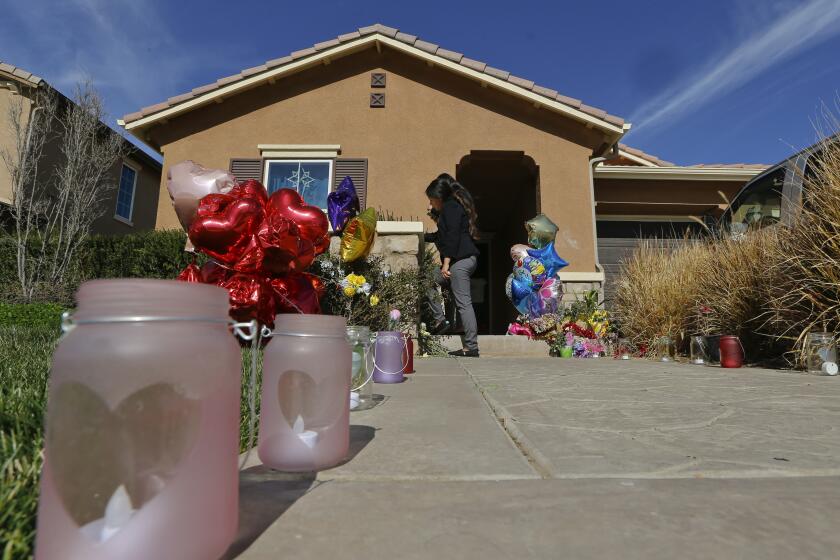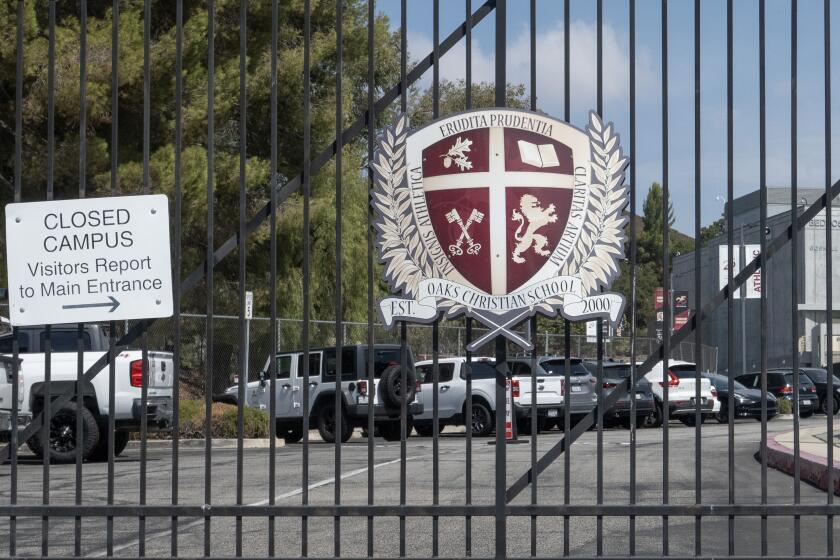Riddle of the Buoy Shootings : Coastal: Coast Guard officials say eight have been shot and sunk in the past year.
Normally, the bright red buoy’s brass whistle can be heard for half a mile, warning mariners off San Pedro’s Point Fermin that there’s shallow water ahead.
But someone riddled the marker with bullets, sending it to the bottom of the sea.
Coast Guard officials say an unprecedented number of these critical navigational aids off the Southern California coast, including Long Beach, have been shot and sunk in the last 12 months.
A buoy three miles off Long Beach was shot and sunk. Its replacement also was sunk. The buoy marking the entrance to the Long Beach harbor was sunk by gunfire, as was a marker alerting mariners to a “precautionary zone” just outside the harbor. At Ventura, the buoy at the harbor entrance was sunk, replaced and sunk again. The light bell off Palos Verdes Point went down to a watery grave in a hail of bullets.
In the past year, eight buoys have been sunk by bullets. At least half a dozen others, from Ventura to Huntington Beach, have been sprayed by gunfire, but they didn’t sink because the holes were above the waterline or the bullets failed to penetrate the quarter-inch steel hulls.
“There has never been anything like this happen before to Coast Guard buoys anywhere in the U.S.,” said Charles Mosher, 52, a Coast Guard marine safety specialist in Washington. “There have been one or two isolated cases over the years of someone sinking a buoy with gunfire, but nothing on this scale.”
Officials are puzzled why someone would want to shoot up the buoys. “It’s a stupid act, like shooting out traffic lights at a busy intersection in a city,” said Cmdr. Larry Eppler of the cutter Conifer, the buoy tender that services, repairs and replaces the 140 navigational aids along 320 miles of California coast from the Mexican border to San Simeon. “It not only threatens the safety of mariners, but it costs the taxpayers a lot of money.”
Some Coast Guard officials speculate that fishermen may be shooting high-powered rifles at sea lions, voracious fish eaters that bask in the sun on the huge buoys. The sea lion population has grown enormously in recent years. An estimated 110,000 now live in California waters, up from an estimated 5,000 in 1972. Several fishermen have been convicted in the past for shooting the animals, which are protected under the Marine Mammal Protection Act.
People caught damaging buoys also can be fined up to $500 and required to pay the cost of recovering or replacing a sunken marker, said Mike Van Houten, assistant chief of the aids-to-navigation section at 11th District Coast Guard headquarters in Long Beach.
Two of the eight sunken buoys could not be retrieved. It costs $20,000 to replace each one. Eppler, the commander of the buoy tender, said recovery operations cost about $1,100 an hour.
One of the Conifer’s most recent assignments was to recover the 26-foot-long whistle buoy riddled with 10 rounds from a high-powered rifle and sunk in 60-foot-deep water off Point Fermin, and then to install a new marker. The effort took six hours.
“It’s hard work,” said Eppler, skipper of the Conifer. “The men get bruised and cut wrestling the huge buoys, handling the shackles and heavy chain. They bang up their elbows, sometimes throw their backs out.”
The Coast Guard crew was aided by two Los Angeles County lifeguards, Jim McDonald and Eric Atkeson, who dived 60 feet to the sunken buoy to attach a recovery line.
Then the Coast Guard cutter’s boom lifted the bulky device from the ocean floor.
As the marker broke through the surface of the sea, it whistled loudly.
More to Read
Sign up for Essential California
The most important California stories and recommendations in your inbox every morning.
You may occasionally receive promotional content from the Los Angeles Times.










